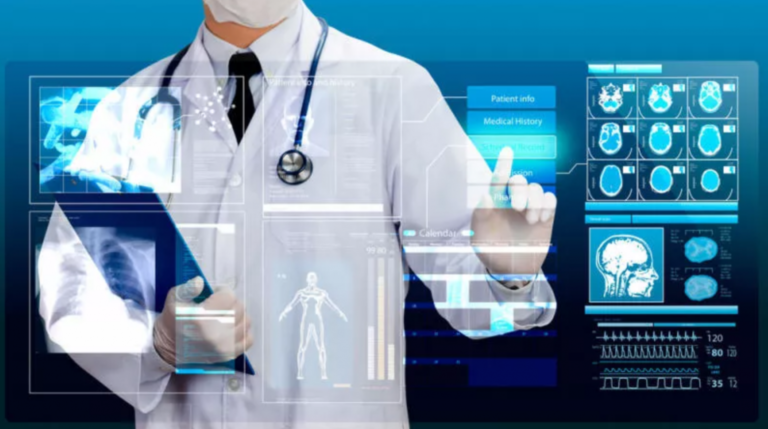To create a robust healthcare system that can withstand future emerging threats, decision-makers need to look to advancements in technology.
Digital transformation has been on the agenda of healthcare providers for many years. However, despite huge progress in the emergence of technology that can help diagnose, treat and cure patients, the wholesale adoption of digital technology to transform services or businesses remains, at best, a long-term goal.
However, everything was shaken up when the Covid-19 pandemic struck. Before the global crisis, healthcare facilities were already burdened with high demand, short staffing, and inefficient workflows. However, in the face of Covid-19, the need for greater efficiency, streamlined processes, and increased responsiveness has become even more urgent.
The British Journal of Surgery has reported that over 28 million elective surgeries across the globe may be canceled as a result of the Covid-19, causing a huge backlog and putting the issue into stark focus. As the global healthcare industry gets back on its feet with the roll-out of efficient vaccine programs worldwide, hospital departments will be tested to their limits as they resume standard treatments, while continuing to support critical care for Covid-19 patients.
To effectively navigate through the pandemic and create a robust healthcare system that can withstand future emerging threats, decision-makers need to look to advancements in technology that can assist healthcare professionals with patient care. But what does that look like?
The solution
The latest innovations making headway in this space are Real Time Locating Systems (RTLS) and Location Based Services (LBS) – which is enabled by LBS.
In short, RTLS works through a combination of wireless technology and advanced proprietary algorithms to provide real-time insights and positioning of people, assets and mobile devices in both indoor and outdoor environments. LBS makes the location information actionable by creating data insights, analytics reposts or defining rules around the position of assets, people, and equipment in both indoor and outdoor environments.
Healthcare facilities are an example of where RTLS can really add value. The technology has an accuracy of around 0.5m and can be configured to track any sensor-enabled device such as a smartphone or a physical tag placed within a lanyard or ID badge. The device then transmits real-time data back to a system, enabling healthcare managers and workers to gather positioning insights on the spot. As well as being able to accurately track the distance between objects and people, the technology can also be rolled out within hospitals to ensure social distancing is being adhered to. The tags work by monitoring the distance between workers and sending out a vibration or an alert in seconds if they get too close.
Beyond social distancing and contact tracing, RTLS technology can also vastly improve patient care by increasing the time clinical staff are able to spend with patients, reduce costs and increase resources and security of facilities. It also provides hospitals with a performance edge by giving decision-makers access to data and insights that can lead to optimal care. With that in mind, we’ve outlined four ways location tracking can benefit healthcare facilities around the world.
Hand hygiene compliance
Hand hygiene protocols form a key part of infection control in hospital environments. Keeping hands clean is one of the most important steps anyone can take to avoid getting sick or spreading germs to others. That being said, research has shown that some healthcare professionals, on average, clean their hands less than half of the time they should.
Location-based technology solutions can be implemented to ensure hand hygiene compliance by alerting if an individual has entered the handwashing station area. Being placed on soap dispensers, it can track the time spent washing hands and send out an alert when the appropriate length of time is up. By having this data, management can get an accurate confirmation that staff hands have been cleaned in line with protocols.
What’s more, combining hand hygiene data with insights on staff positioning, RTLS can identify and notify staff if they have been exposed to diseases such as influenza based on their recorded interactions with patients, potentially saving lives in the process.
Share resources across locations
A major challenge in hospitals is having enough equipment for specialist care as and when emergencies arise. We’ve seen this recently with the Covid-19 pandemic, with hospitals needing to borrow PPE and ventilators to accommodate the increasing number of patients. Using RTLS technology, hospitals can view stock levels of assets and equipment at facilities in close vicinity and their subsequent locations. Collaborating with neighboring hospitals in this way means staff doesn’t need to order more equipment but instead can loan from hospitals nearby – and quickly.
Time is of the essence with medical emergencies. In an emergency situation, location-based services can help track assets and immediately find the needed equipment, such as the closest defibrillator. Instead of having to search for objects or equipment manually, staff can glance at a screen and instantly know where everything is, which can make a difference in a life-and-death situation. In addition, with the technology being able to show staff whereabouts, RLTS can be integrated into pagers and alert the closest doctor or specialist to the patient in an emergency situation.
Saving money
Hospitals are settings where assets are always on the move and can get lost in the process. Placing RTLS tags on equipment means healthcare workers can keep track of where everything is in real time. This removes unnecessary replacement expenses if something gets lost, an improvement that can positively impact a hospital’s finances.
Another benefit of RTLS is monitoring the expiry date of medicines, particularly those with short shelf life or those that need to be stored at a certain temperature. Monitoring the status of the equipment frees up staff time, saving the facility time and money in the long run.
Security
RTLS can also help hospitals and healthcare facilities increase the security and safety of patients and staff. Hospitals house vulnerable patients, as well as patients in physical or mental distress and volatile or intoxicated patients. By providing these patients with tags that trigger alerts if these patients start wandering around and go outside allowed areas – or even when they fall – healthcare workers can immediately help and address the situation at hand.
Another use case for enhancing security is via access control, making sure those without authorization cannot access areas they should not. This can be extremely successful for areas where medications are kept or limiting areas with surgical equipment for doctors and nurses only.
Conclusion
As we emerge from the pandemic, hospital facilities need to invest in technology that can withstand future crises. Hospitals using RTLS and LBS can significantly improve patient care, as well as increase efficiency of processes, saving them time and money in the long run.

